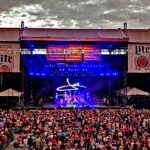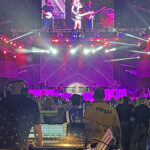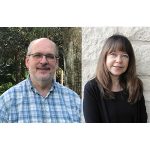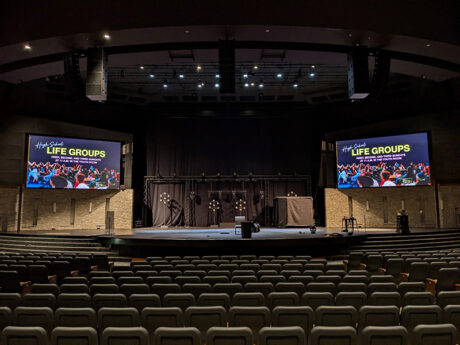
JRLX doesn’t want all the business. They don’t even want most of it.
Partners Jason Reberski (CEO) and Kevin Rosenhagen (COO) take a measured approach to growth in this often-volatile industry. They’ve seen other companies grow exponentially in general but not in profits, and their passion is keeping JRLX healthy so they can maximize how they service their clients. “We don’t take on every project, and partially because of that, we’re sought after for the quality of work we do,” says Rosenhagen. “We don’t need to do every single thing. We want to do what we do incredibly well.”
By their high client retention rate, their business philosophy is working for them. Based in Tinley Park, IL, JRLX is providing touring production, lighting, and visual solutions beyond their Chicago region in addition to steadfastly continuing their offerings in technical sales and integration. In fact, in early 2020 they were deeply involved in the specification and supply of the lighting package for San Diego Symphony’s Rady Shell lighting system project which was named Forbes magazine’s “Coolest New Concert Venue” this year. Today the business is about 75 percent sales and integration and 25 percent touring. Their touring production gear is complete with the latest in lighting and effects technology. They boast a vast vendor line card. As far as touring acts they support, that list includes Gojira, Mt. Joy, Iron and Wine, Taking Back Sunday, Sum 41, Dropkick Murphys, Andrew Bird, Andrew McMahon, I Prevail, Simple Plan, and The Used, among many others.
They describe themselves as a design/build shop that is able to develop the specs of an integration project themselves, working in partnership with the client. “Our clients become our friends as we start with an open dialog void of B.S.,” Rosenhagen states bluntly. “And on the production/touring side, we find out what their needs are and start putting a package together that meets both the numbers and their aspirations. No client is just a dollar sign here.”
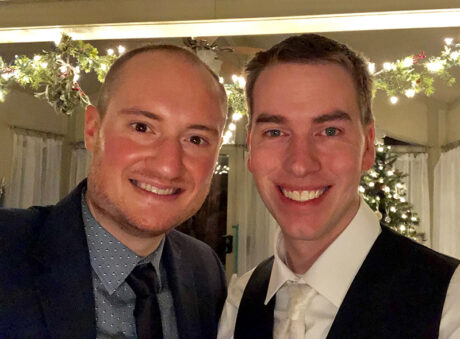
For the Love of Fog
Reberski can pinpoint the exact moment when he started his journey into a love of the magic of live events. The spark happened when he was a kid at Disney World on the Delta Dreamflight aviation ride. During that theme park experience, he was whisked “through” a jet engine complete with smoke. “It had such a unique smell, I had to find out what was making that,” he recalls. He learned it was a Rosco machine, and the first grader had his dad call the company. “He got [then Rosco Fog Manager] Eric Tishman on the phone and got him to send me a bunch of literature.” The lad consumed it, and while other kids were finding action figures or even an Atari console under their Christmas tree, Reberski discovered a Rosco 1500 Fog Machine under his. More Rosco literature came, and “I fell in love with lighting, too.” Reberski’s interest in the magic of lighting and effects evolved into actual magic: at 13, he became a professional magician, and in 1999, he opened and closed for star magician Lance Burton in a national television special in which he portrayed the young Lance Burton.
In high school, he was running lighting for plays, musicals, and dance shows, often next to an audio kid who would start out as his arch nemesis. “We hated each other,” Reberski says of Rosenhagen, causing both to laugh. “You don’t want to know the stuff we did to each other!” But more important than high school hijinks, animosity quickly flipped into being best friends. “It’s the wildest thing, but Jason became like a brother to me, and his parents are like my second parents,” Rosenhagen says. “We have that kind of bond.” Reberski echoes that sentiment, “I love Kevin and he is really the brother I never had…plain and simple.”
As for Rosenhagen, he became interested in the business in junior high when the typical “Friday announcements” were made over the school’s TV instead of just the P.A. By the middle of his 8th grade year, he had a TV camera on his shoulders and was standing on Soldier Field working a Chicago Bears game, and “from that moment I knew what I was going to do.” In high school he focused on sound. After graduating, he started working at Governors State University south of Chicago as assistant technical director and FOH engineer. During and after that time, he was also working for Harpo Studios, Chicago Flyhouse, Event Engineering, and various TV networks.
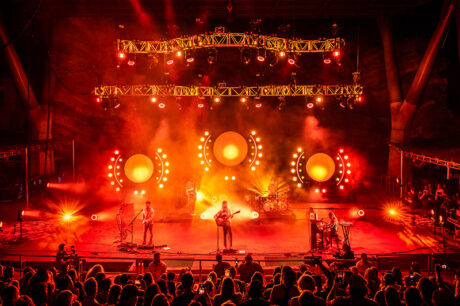
JR Lighting Design
After Reberski graduated with a BA in Theater and Lighting Design from Lewis University in Romeoville, IL, he was a freelance designer until he started JR Lighting Design in 2010. But the self-described “gear head” found himself increasingly drawn to dealing in the products. Rosenhagen would join his good friend as a partner just a few years later. “We got some pretty large projects going right away,” Reberski says. Some of their early installations were for Chicago’s Adler Planetarium with lighting designer Eric Price. “Then we started picking up dealerships for entertainment technology companies.” An early big break came when they were asked to support a legendary music hall, The Birchmere, in Alexandria, VA, who are still clients today. “And it was all while still just working out of my house.”
Building up dealerships was challenging, though. Reberski says no one had started a lighting company in the Chicago area in well over a decade. Understandably, older long-established companies did not take kindly to upstarts and discouraged manufacturers from dealing with them. But talent and perseverance, plus being able to support the live event community with a quality customer service experience enabled them to prevail. “Now I don’t think there’s a manufacturer that we don’t directly represent as an authorized dealer,” Reberski says.
When they moved from the house, it was into a small section of a building in an industrial park. Then into a second building shortly thereafter. As the years passed, they “just started knocking down walls” and the company’s physical space kept expanding until they hit the building’s firewall. Today that shop space has comfortable lodgings for their touring department, and they can hang multiple rigs in the shop at the same time. It also is used as a rehearsal space and even a TV studio occasionally. Also in that warehouse is a printing department housing a large format multi-substrate latex printer and CNC cutting machine that can print anything from cloth banners to speaker mesh to wallpaper—though they mostly use it to produce custom branding and labeling for clients.
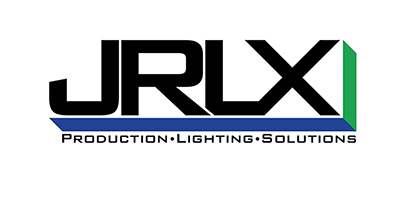
Rebranding as JRLX
In 2019, they rebranded as JRLX, Inc. “We are not a design firm, and this rebranding is a great opportunity to tell our story of evolution,” Rosenhagen said in the press release announcing the change at the time. Reberski explains further: yes, they got into the business as lighting designers, and at one point, everyone on the company payroll was in fact a lighting designer, but they quickly evolved to supporting lighting designers and needed to take the “design” out of their name. “It has taken the ambiguity out of it,” Reberski says, of becoming JRLX. The “X” represents an unknown, defining variable, which is appealing to designers and clients who come searching not for products, but for solutions. Today they are solution-driven, and can integrate video, special effects, and custom fabrication elements for touring and integration clients in addition to lighting. Thus, a lot of designers of different backgrounds are calling.
But while “design” is out of their name, they are in fact there to help not just logistically, but creatively. They have their “mod pods,” which Reberski says is their nickname for their custom touring lighting/scenic carts which are a fully configurable system of proprietary channel-mount hardware and custom base frames. “This allows touring clients to dream up pretty much whatever they might want to achieve and still have a truck-pack friendly packaging solution. For example, Kevin developed a brilliant easy-touring rig for the band Mt. Joy to achieve Production Designer Max Lenox’s vision,” Reberski says. “They wanted these giant balloons with half-circle trusses. It was a beautiful custom truss that they were able to max out with lights on it, yet it had this simple collapsible design that fits neatly in a semi.”
Another example of their engineering ingenuity was the work they did with a video wall installation project at Calvary Church of Naperville, IL. The church wanted to update their productions to include two giant screens, but the building’s rigging was only designed for lightweight projection screens, so JRLX created some careful structural engineering to handle the heavy load—seamlessly. And in building a new church or upgrading an existing space, they like taking the parameter of the building and the budget and then go at it. “We take great pleasure in putting it all together at the price point they can afford. There’s a lot of gratification when we complete a project like that.”
Again and again, Reberski comes back to emphasizing that JRLX has “calculated, sustainable growth. That’s how we came out of Covid.” Rosenhagen adds that the key to getting through that time was their “amazing” CFO Denise Koziel, whose quick thinking and deep business knowledge made it possible to survive and thrive when other companies could not. Reberski pauses and then adds with a smile: “In general, our goal is to not do anything stupid.” This includes growing the inventory. They are careful about what they invest in. “You have to be crazy or passionate to be in this business,” he continues with a laugh. “We are more passionate than crazy. We genuinely care and get excited about every tour, every project. And I’m still a lighting and fog geek—I open PLSN magazine every month and read it for what is new. It all helps us create solutions as opposed to just providing lighting/staging/video gear.”
“We build relationships,” Rosenhagen adds. “And we partner with the client, becoming part of their team, working within their budget to provide a creative, well-packaged product. And we like to blow them away with our attention to detail.”
Learn more about JRLX at www.jrlxinc.com
